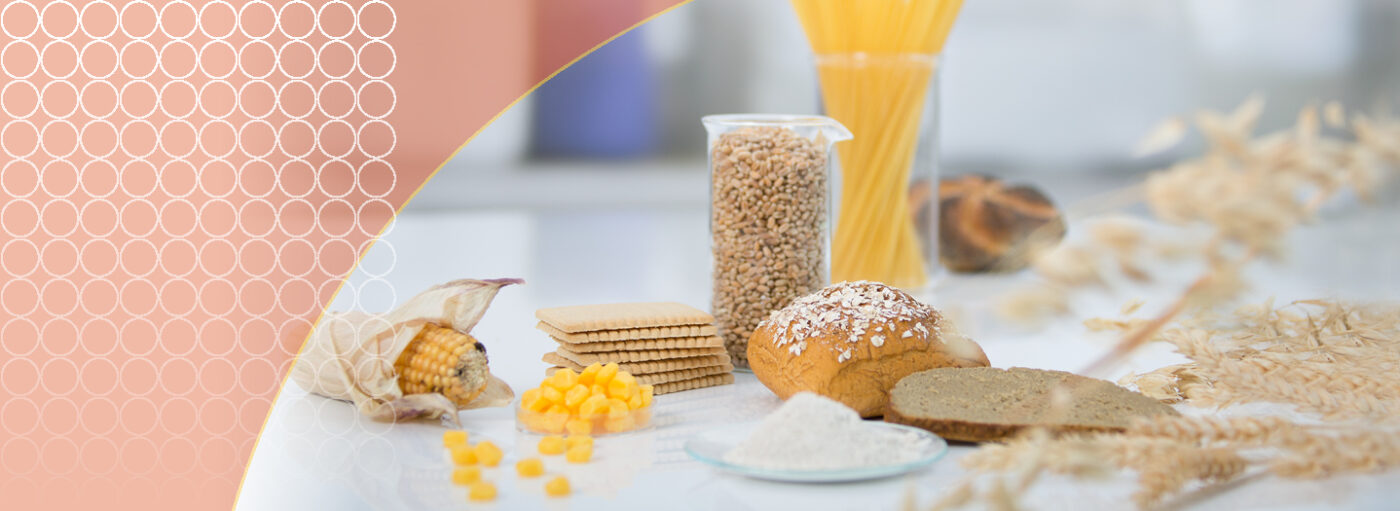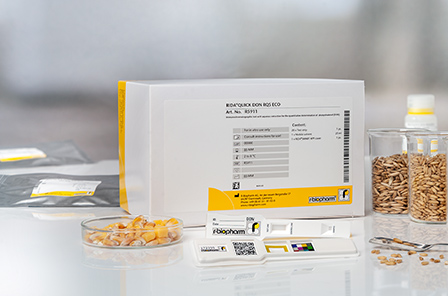
Recent news in Food & Feed Analysis
- Home
- /
- Mycotoxines
- /
- DON: Dans quelle mesure...
DON: Dans quelle mesure nos céréales sont-elles contaminées ?

Du pain moisi est facile à reconnaître pour le consommateur. Cependant la moisissure peut déjà s’être développée dans le champ et contaminer les grains et donc une récolte. Plus dangereux que le champignon lui-même ce sont les toxines qu’il produit, appelées mycotoxines. L’une des mycotoxines les plus répandues est le désoxynivalenol (DON).
Les mycotoxines telles que la désoxynivalenol (DON) sont un problème pour l’agriculture mondiale et un danger pour la santé. On estime qu’un quart des aliments produits dans le monde serait contaminé par des mycotoxines. Les toxines fongiques peuvent avoir des effets toxiques même en faibles concentrations et causer des dommages aigus et chroniques. Actuellement, plusieurs centaines de types de mycotoxines, produites par différents champignons, sont connues. La deoxynivalenol (DON) est une mycotoxine du groupe des trichothécènes qui est produit par des moisissures du genre Fusarium.[mk_title_box font_family= »none »]Quelle est l’importance de la DON en terme de contamination ? [/mk_title_box] La mycotoxine « DON » est la mycotoxine la plus courante en Europe et en Amérique du Nord et se trouve régulièrement dans les céréales comme le blé, l’orge, l’avoine et le maïs. Cependant, la propagation des moisissures dépend des conditions climatiques et varient d’une région à l’autre et d’une année à l’autre. Un temps changeant avec beaucoup de précipitations pendant la floraison des céréales est favorable à la croissance de la moisissure. En 2016, par exemple, des concentrations de DON très élevées ont été enregistrées en Europe centrale. Les valeurs limites de l’UE ont été dépassées à plusieurs reprises dans certaines régions. L’année suivante, ce sont les pays scandinaves qui ont été particulièrement touchés. Aucune prévision ne peut encore être faite pour la récolte de 2020 – mais le printemps, qui était très humide dans de nombreux endroits, pourrait probablement laisser sa marque.[mk_title_box font_family= »none »]How dangerous is DON?[/mk_title_box]La mycotoxine « DON » a de nombreux effets toxiques: elle peut causer une intoxication aigue, qui se manifeste par des nausées et des vomissements – ce qui lui a valu le surnom de « vomitoxine ». En outre, elle a des effets immunosuppresseurs et cytotoxiques et peut causer des problèmes rénaux. Chez les animaux nourris d’aliments contaminés, la mycotoxine « DON » peut entraîner une perte d’appétit, un retard de croissance et une sensibilité accrue aux infections. Les porcs sont particulièrement sensibles à la toxine.[mk_title_box font_family= »none »]Quelle est la réglementation actuelle?[/mk_title_box]Afin d’éviter un danger pour la santé humaine et animale, la plupart des pays ont fixé des valeurs limites pour la teneur en mycotoxines dans les aliments et les aliments pour animaux. Le tableau suivant montre les niveaux maximaux applicables dans l’UE.
| Deoxynivalenol in food | Maximum level |
|---|---|
| Unprocessed cereals (excluding durum wheat, oats and maize) | 1250 μg/kg |
| Unprocessed durum wheat, oats and maize | 1750 μg/kg |
| Cereals intended for direct human consumption, cereal flour, bran and germ | 750 μg/kg |
| Bread, biscuits, pastries, cereal snacks and breakfast cereals | 500 μg/kg |
| Dry pasta | 750 μg/kg |
| Processed cereal-based foods and baby foods | 200 μg/kg |
| Deoxynivalenol in feed | Maximum level |
|---|---|
| Unprocessed cereals and cereal products (excluding maize by-products) | 8 mg/kg |
| Maize by-products | 12 mg/kg |
| Complementary and complete feedingstuffs | 5 mg/kg |
| Complementary and complete feedingstuffs for pigs | 0.9 mg/kg |
| Complementary and complete feedingstuffs for calves | 2 mg/kg |

